Rollette
See also the Hansa Semi Rollette 4.5×6 folder and the Hansa Rollette Ref 4.5×6 pseudo TLR, both sold by the Japanese company Ōmiya.
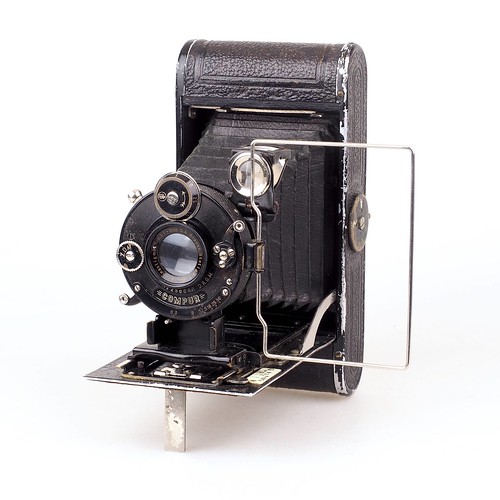
|
| Rollette (5x8), Type 2 image by Christoph Batz (Image rights) |
The Rollette was a viewfinder folding camera made by G. A. Krauss in Stuttgart, Germany from about 1924 to 1931. It claims to be the first German camera for the 5x8 cm format (sometimes referred to as 5x7.5) on 129 film [1]. Aiming for the Vest Pocket Camera market it is actually about the same size as the famous Vest Pocket Kodak (4x6.5cm on 127 film), but creating negatives with a 40% larger area. Some sources claim, that the Rollette was available for the smaller 127 film as well, but there is no proof for this (see section below).
Models and Variations
The Rollette was announced in 1923 [2] and was available on the market from about 1924 to 1931. During the production subsequent improvements or design changes have been implemented. Six different types have been identified, and the following sequence has been proposed [3]:
- Type 1: This might be just an early prototype (1923 ?), but there is only one version with a strut folding mechanism the Rollette shared with its plate camera sisters Knirps/Nanos. This version was not covered in leather and carries a low serial number (2342)[4].
- Type 2: Folding bed. Characteristic is the rectangular fold-out stand and the one-piece struts that stabilize the lensboard and swivel towards the edge of the camera when folded. The closed camera is adorned with a "Rollette" lettering, either embossed in leather or (in the case of early leatherless cameras) engraved in white in black hammer finish. The open lensboard shows the circular "GKAS" symbol (for GA Krauss, Stuttgart). Camera serials are mostly 4-digit and production can be assigned to the years 1924-1926.

|
| Rollette Luxus (Type 2) by G.A. Krauss circa 1926 image by Bernard Rose (Image rights) |
- Type 3: This is a transition type from 1927 [1]. The struts are now divided in two with a hinge and pivot towards the center of the camera when folded in. Types 1 to 3 have a 2 cm sized rotating wheel with the letters Z and A as the case shell latch. Serial numbers have been found to be low 5-digit.
- Type 4: From 1928 on the Rollette was offered in two variants in parallel. Type 4 is the low cost version, with simple shutters and lenses, the wire frame finder was missing. Both types, 4 and 5 had the following in common: The characteristic "elephant foot" shaped stand with engraved Rollette lettering on it and a "Krauss" embossed in leather above the lens. The locking is now realized with a smaller slider. The round GKAS symbol was replaced by a simple "Krauss - Stuttgart" lettering. Serial numbers for both versions started with about 20.000 up to just below 50.000. In a Rollette manual from 1928[5] this low cost type 4 has been referred to as Rollette Nr. 216.
- Type 5: This is probably the most common variant. In addition to the low cost type 4 it offered a fine focussing mechanism (see picture below). A second tripod socket was added in the center of the lensboard.
- Luxus: From the construction types 2, 3 and mostly 5 there were so-called luxury versions with yellow or light brown leather and shiny polished edges. Such cameras were often bought with a Carl Zeiss Tessar 9cm/4.9, 8cm/4.5 or even 7.5cm/4.5.
- Type 6: In addition to the rare type 1, there is probably another exotic variant. This might be assigned to the year 1931 because of the RIM Compur used and the Tessar serial number. It has a complex strut mechanism that realized focussing using a rotary knob on the body. In addition, the previous frame viewfinder has been replaced by a flip-up viewfinder.[3]

|
| Most differences of Type 2 (1925) vs. Type 5 (1928) can been seen on this picture image by Christoph Batz (Image rights) |
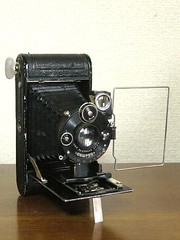 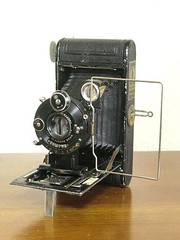 
|
| Rollette, wrongly assigned as 127 film camera. Dial-set Compur, Tessar 7.5cm f/4.5. images by eBayer Yalluflex (Image rights) |
- Version for 127 film: There are some sources claiming that there was a smaller version of the Rollette for the Vest Pocket film 127. Having different versions of the same camera for different roll films was quite usual within the 1920ies and 1930ies. However, there is no proof for this claim. What have been sighted is use of 127 film in the 129 camera by means of a spool adapter or even modifications of the image window [3]. Some collectors might have been mislead by the fact that the camera was available with a 7.5cm Tessar, the standard lens for 4.5x6 images. However, the historic brochure clearly list this lens option under the 129 film camera
Specifications
- leaf shutter folding bed camera 5x8cm on 129 film, exact image frame: 48x74 mm
- available with various lenses, most commonly found with Rollar-Anastigmat 9cm f/6.3 (triplet)
- Shutters available: Pronto T-B-25-50-100, Ibsor T-B-1-2-5-10-25-50-150, Compur T-B-1-2-5-10-25-50-100-300, both in dial-set as well as RIM-set (from 1928)
- Brilliant finder, switchable for portrait and landscape
- Foldable wire-frame finder, missing on later type 4 cameras.
- Tripod socket 3/8", from type 5 on a second tripod socket was embedded in the lensboard
- Dimensions: 128 x 65 x 25 mm, 290 g
Image Gallery

|

|
| Rollette Type 5, rim-set Compur, Rollar-Anastigmat 9cm f/4.5. image by Drew Wertheimer (Image rights) |
Rollette Type 4, no-name shutter, Rollar-Anastigmat 9cm f/6.8. image by Alf Sigaro (Image rights) |
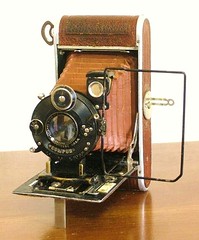 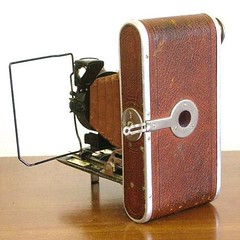 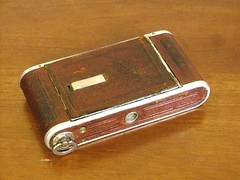
|
| Rollette Luxus (Type 3) with dial-set Compur. images by eBayer Yalluflex (Image rights) |
References and Links
- ↑ 1.0 1.1 Krauss Rollette brochure from 1927
- ↑ Hartmut Thiele, Die Deutsche Photoindustrie - Wer war Wer, 8th edition, Munich 2021.
- ↑ 3.0 3.1 3.2 G.A.Krauss Rollette on KniPPsen
- ↑ Rollette Type 1
- ↑ Rollette Gebrauchsanweisung (Manual in German, 1928)
In French:
- Rollette (5×7.5cm) with Rollar-Anastigmat f/6.3 and Pronto at Clic-Clac
- Rollette Luxus with Tessar f/4.5 and rim-set Compur: wallpapers by Ami [1], [2], [3], [4], [5] at Annuaire-Web-France
- Rollette (5×7.5cm) with Rollar-Anastigmat f/6.8 at André Loiseau's blog
- Pages on www.collection-appareils.fr by Sylvain Halgand: